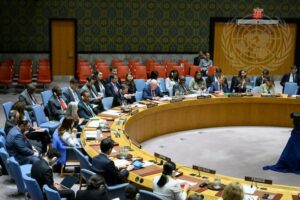The Stanley Center for Peace and Security, the Stimson Center, and Pacific Northwest National Laboratory (PNNL) coorganized a two-day workshop focusing on understanding those nontechnical factors that may hinder–or motivate–stakeholder acceptance of DLT systems. The workshop included participants from IAEA member states, nuclear operators, state authorities, national missions, blockchain companies, research institutions, and international organizations.
This report summarizes observations and key findings from that workshop. It aims to inform member states and the IAEA about the challenges and opportunities associated with deploying DLT for safeguards purposes. It draws on survey data on how participant perspectives shifted during the workshop. It also explores potential user requirements that should be considered if stakeholders decide to move forward with designing a DLT for safeguards verification and analysis.




